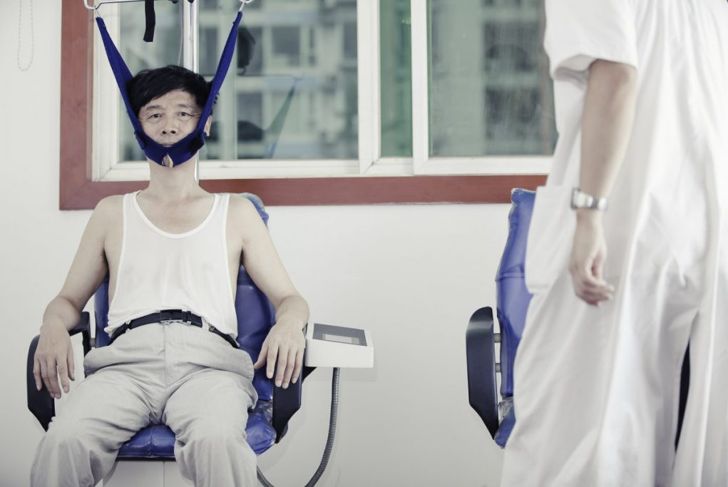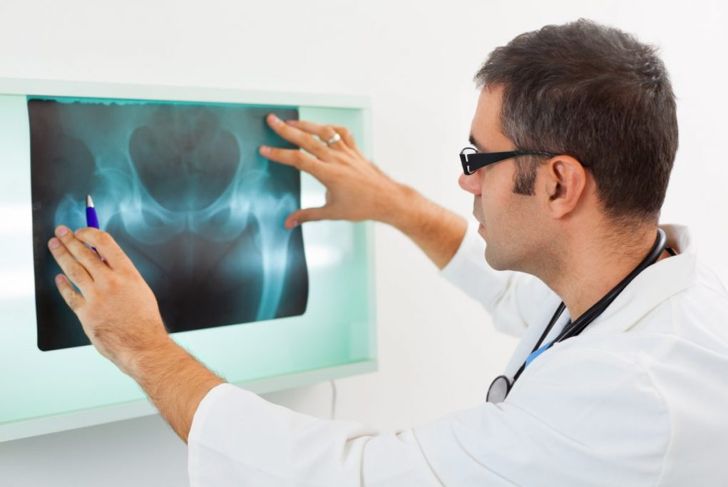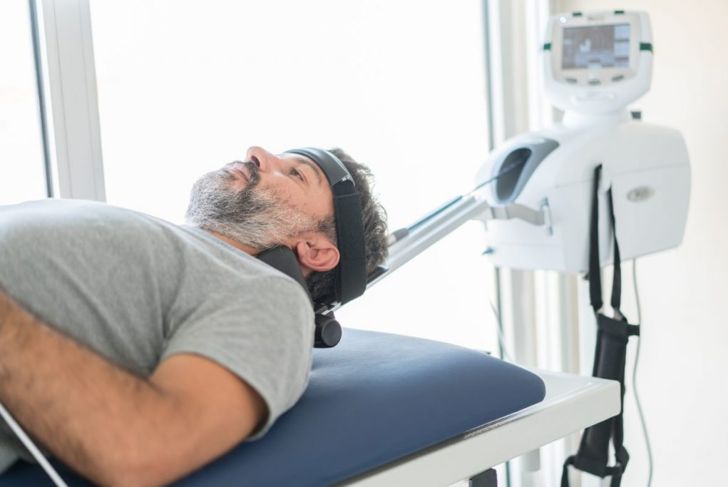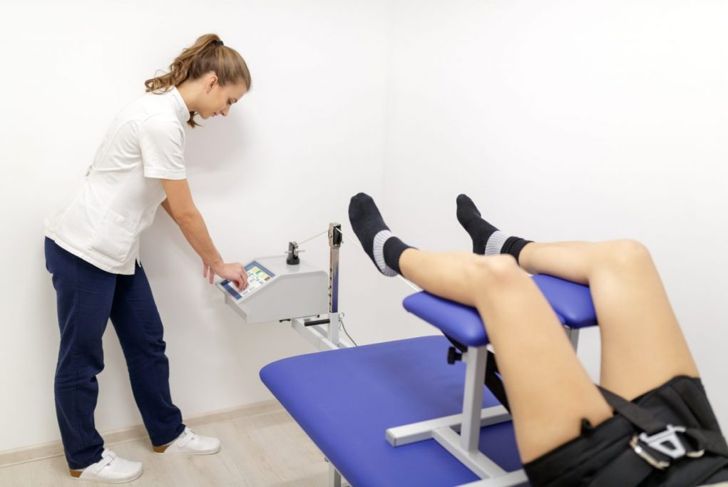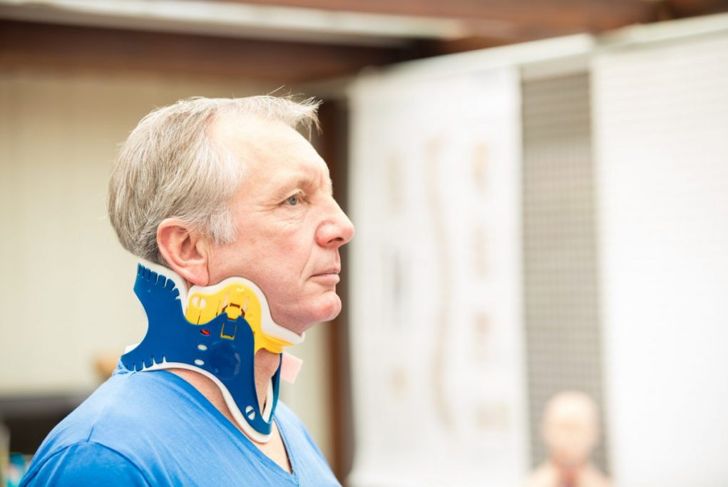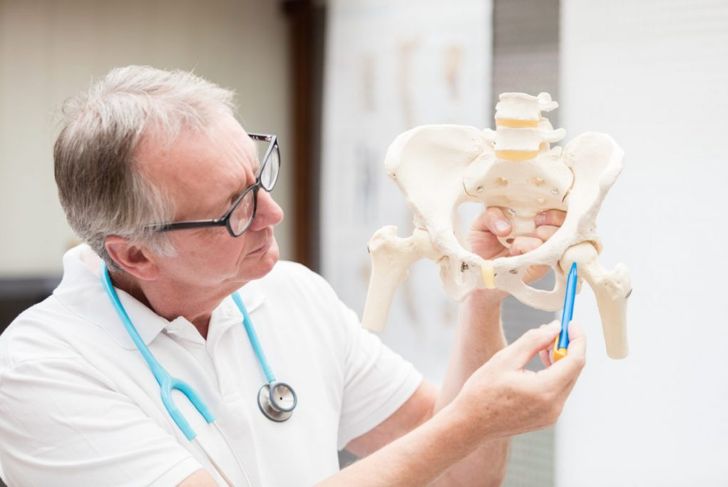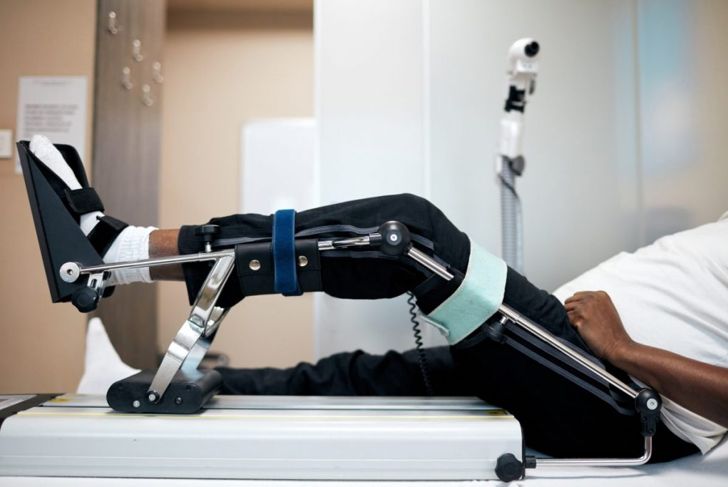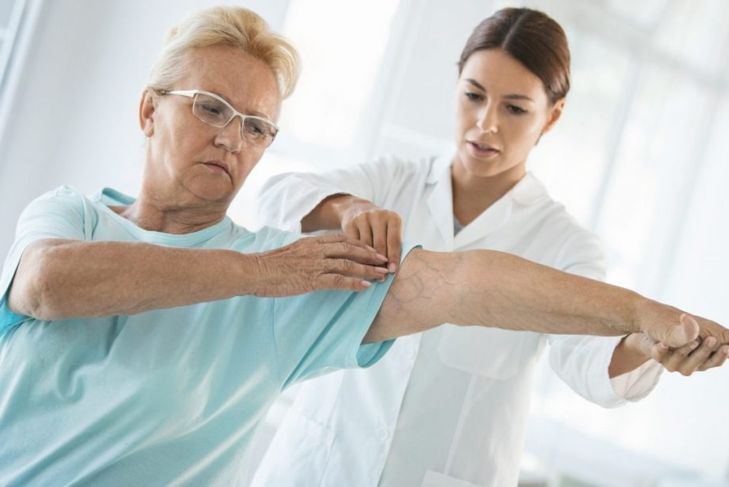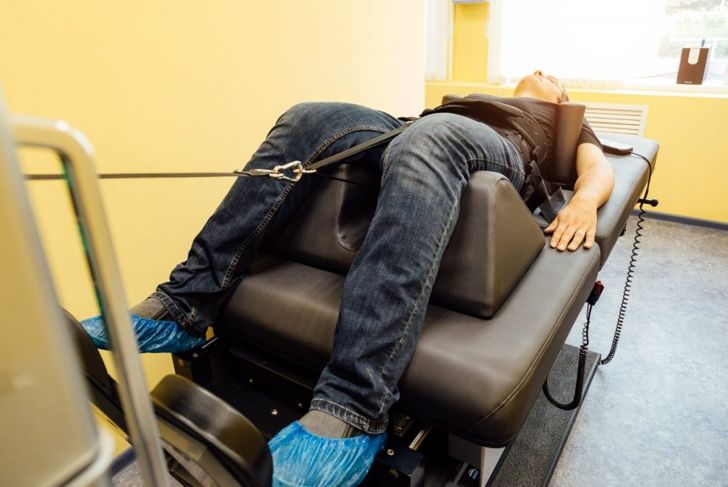Medically speaking, traction is the slow pulling of an injured body part as treatment. Traction has historically been most useful in aligning fractured bones, though experts have begun to use it to treat a variety of issues. There are two types of traction, skin and skeletal, and both encompass a range of techniques. Though traction has many possible benefits, it also carries inherent risks and can cause dangerous complications.
Skin Traction
Of the two types of traction, skin traction is less invasive. Depending on the technique, doctors use bandages, splints, tapes, or braces to secure the skin near a fracture or joint. They then fasten weights or elastic devices to these tools to slowly pull the affected body part into the correct position. Experts have historically used skin traction when soft tissues like muscles and tendons need repair, though its uses have become more varied in recent years.
Skeletal Traction
Unlike skin traction, skeletal traction almost always requires surgery. The surgeon inserts a wire, pin, or screw into a damaged bone. Once the tool is secure, they attach weights to it to pull the bone into the correct position. Doctors may use skeletal traction as a treatment itself, or it may be a temporary measure until they can perform a better treatment. Because bones are stronger than soft tissues, experts can use more weight with less risk. However, because skeletal traction surgery is invasive, doctors tend to default to other treatment options. The practice’s most common modern use is for acetabular fractures in the hip joints, particularly in older individuals.
Traction Popularity
Traction has existed in simplistic forms for thousands of years. There are illustrations of Greeks using traction devices dated around the 2nd century CE. However, traction’s use has decreased dramatically in recent years. There are many reasons for this drop in popularity. Orthopedic traction has many possible risks and complications, despite its benefits. This, in combination with the development of other treatment options, prompts physicians to be wary of traction treatments. Additionally, some studies show that the effects of traction may be overstated. Modern doctors tend to use skin traction in moderation alongside braces and save skeletal traction for specific issues.
Administering Traction
Physicians can use many methods to apply traction, and each has strengths and risks.
Continuous traction involves using low weights for extended periods. Because of the length of treatment, it is not necessary to use heavier weights.
Sustained traction uses heavier weights for shorter periods.
Manual traction means an expert uses their hands or simple tools, such as a belt, to apply traction.
Intermittent mechanical traction features a mechanical unit that can release traction at specific intervals.
Autotraction utilizes a unique table that therapists can tilt and rotate as necessary.
Positional traction is the most simple. It requires using objects such as pillows or blocks to hold a patient in place.
Braces and Traction
Though many forms of traction have fallen out of favor, the use of braces is still incredibly popular. For example, the Milwaukee brace is a full-torso tool that extends from the base of the skull to the pelvis. Doctors use it to treat spinal curvature issues such as kyphosis or scoliosis, particularly in children, to ensure that the spine’s shape will correct itself as the child grows. Neck braces for holding the spine still or treating neck pain are also extremely common. One notable weakness of braces is that the neck or spine may revert to its original shape once a physician removes the brace.
Bryant’s Traction
Like many other methods, Bryant’s traction can treat several issues. Most commonly, doctors use it to help children with femoral fractures or hip disorders. Doctors begin by laying the child on his or her back and suspending both legs in the air at a 90-degree angle from the hips. This loosens the tendons, ligaments, and muscles around the hips. Over the treatment period, physicians use a pulley system or their hands to gradually move the hips and legs outward from the body.
Other Techniques
Physicians may use a variety of other traction techniques, including
Buck’s traction, is a common type of skin traction. This is one of the most general traction techniques, with a history of use in treating back pain, as well as femoral, hip, and acetabular fractures.
Russell’s traction involves elevating a leg fracture. Some people recognize this type of traction from cartoonish and comedic depictions of broken legs, though the method of elevation has changed.
Dunlop’s traction, where a doctor elevates supracondylar fractures of the humerus.
Possible Risks
As with most procedures, traction carries certain risks. A patient can have an adverse reaction to the anesthesia used during the preparatory surgery. If a physician uses too much weight too quickly, this can cause damage to the surrounding tissue, nerves, or blood vessels. Skeletal traction has many other possible risks, such as excessive bleeding or infection of the pin site, because it is an invasive surgery.
Serious Complications
Beyond the basic risks, traction also has the potential to cause serious complications. One such complication is compartment syndrome, which occurs when the pressure within the muscles builds to dangerous levels. This can disrupt blood flow to the muscles and nerve cells, resulting in cell damage. Joint contractures that severely inhibit movement are also common. Without proper joint motion, even casual activities may become difficult.
Overall Effectiveness
Because modern medicine has advanced, traction is rarely the most effective option available. However, it is still a useful method for treating fractures in certain locations and relieving muscle pain. Even if traction is not the best treatment option, it may be useful as a temporary choice until experts can pursue better treatments. Additionally, braces that apply traction will likely continue to be useful in the future, until new methods are developed.

 Home
Home Health
Health Diet & Nutrition
Diet & Nutrition Living Well
Living Well More
More